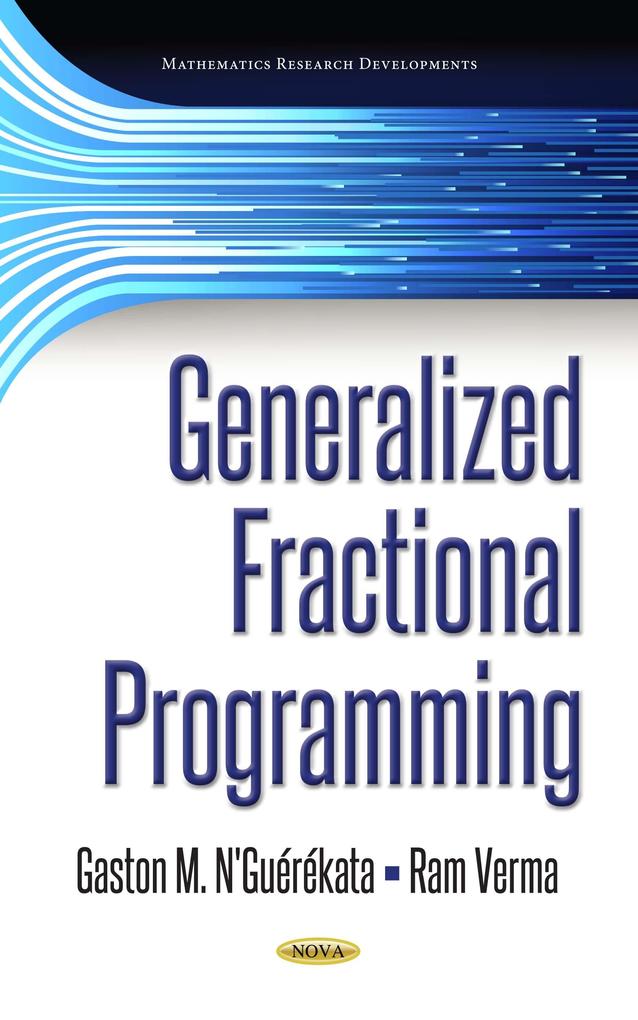
Sofort lieferbar (Download)
This monograph is aimed at presenting smooth and unified generalized fractional programming (or a program with a finite number of constraints). Under the current interdisciplinary computer-oriented research environment, these programs are among the most rapidly expanding research areas in terms of its multi-facet applications and empowerment for real world problems that can be handled by transforming them into generalized fractional programming problems. Problems of this type have been applied for the modeling and analysis of a wide range of theoretical as well as concrete, real world, practical problems. More specifically, generalized fractional programming concepts and techniques have found relevance and worldwide applications in approximation theory, statistics, game theory, engineering design (earthquake-resistant design of structures, design of control systems, digital filters, electronic circuits, etc.), boundary value problems, defect minimization for operator equations, geometry, random graphs, graphs related to Newton flows, wavelet analysis, reliability testing, environmental protection planning, decision making under uncertainty, geometric programming, disjunctive programming, optimal control problems, robotics, and continuum mechanics, among others. It is highly probable that among all industries, especially for the automobile industry, robots are about to revolutionize the assembly plants forever. That would change the face of other industries toward rapid technical innovation as well. The main focus of this monograph is to empower graduate students, faculty and other research enthusiasts for more accelerated research advances with significant applications in the interdisciplinary sense without borders. The generalized fractional programming problems have a wide range of real-world problems, which can be transformed in some sort of a generalized fractional programming problem. Consider fractional programs that arise from management decision science; by analyzing system efficiency in an economical sense, it is equivalent to maximizing system efficiency leading to fractional programs with occurring objectives: Maximizing productivity Maximizing return on investment Maximizing return/ risk Minimizing cost/time Minimizing output/input The authors envision that this monograph will uniquely present the interdisciplinary research for the global scientific community (including graduate students, faculty, and general readers). Furthermore, some of the new concepts can be applied to duality theorems based on the use of a new class of multi-time, multi-objective, variational problems as well.
Produktdetails
Erscheinungsdatum
01. November 2017
Seitenanzahl
315
Dateigröße
2,17 MB
Herausgegeben von
Gaston M N'Guerekata, Ram U. Verma
Verlag/Hersteller
Kopierschutz
mit Adobe-DRM-Kopierschutz
Family Sharing
Ja
Produktart
EBOOK
Dateiformat
PDF
ISBN
9781536128703
Entdecken Sie mehr
Bewertungen
0 Bewertungen
Es wurden noch keine Bewertungen abgegeben. Schreiben Sie die erste Bewertung zu "Generalized Fractional Programming" und helfen Sie damit anderen bei der Kaufentscheidung.










